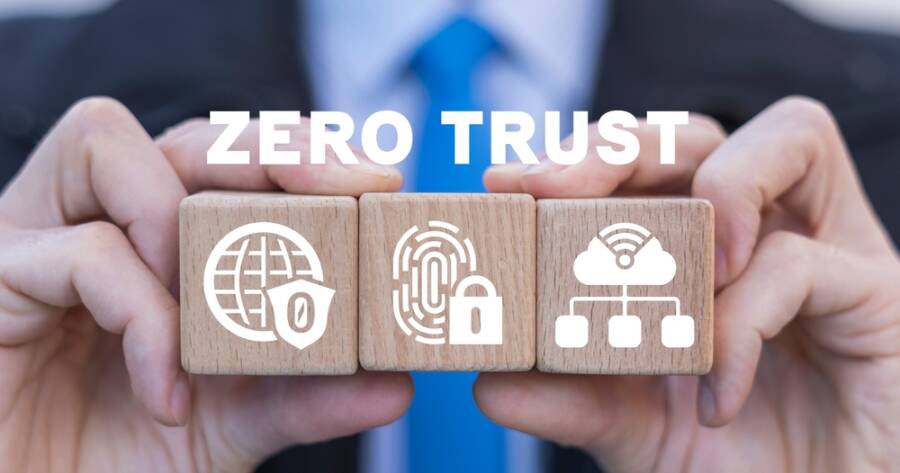Zero trust security architecture focuses on verifying every user and device before granting access to resources. This approach reduces risks by restricting access to only essential data, while also aiding in compliance with data protection regulations.
What Is Zero Trust Security Architecture?
Zero Trust Security Architecture is a cybersecurity framework that operates on the principle of “never trust, always verify.” This model assumes that threats could be both external and internal, thus requiring strict verification for every user and device attempting to access resources within a network. Unlike traditional security models that rely on perimeter defenses, Zero Trust emphasizes continuous authentication and authorization, ensuring that every access request is scrutinized regardless of its origin. This approach is particularly relevant in today’s digital landscape, where remote work and cloud services have blurred the lines of network boundaries.1
Recent studies highlight the growing adoption of Zero Trust principles among organizations seeking to bolster their cybersecurity posture. According to a report from the Cybersecurity & Infrastructure Security Agency, the Zero Trust model is increasingly recognized as a best practice for securing sensitive data and systems. By implementing this architecture, organizations can better protect themselves against sophisticated cyber threats, including data breaches and insider attacks. The shift towards Zero Trust is not merely a trend but a necessary evolution in response to the changing threat landscape.
Furthermore, the implementation of Zero Trust Security Architecture involves a combination of technologies and strategies, including identity and access management, endpoint security, and network segmentation. Organizations are encouraged to adopt a holistic approach that integrates these components to create a robust security framework. As cyber threats continue to evolve, the Zero Trust model provides a proactive strategy to safeguard critical assets and maintain operational integrity.
How Zero Trust Security Enhances Protection and Reduces Risks
Zero Trust Security enhances protection by ensuring that every user and device is verified before being granted access to sensitive resources. This rigorous verification process significantly reduces the risk of unauthorized access, as it requires continuous authentication and monitoring of user behavior. By implementing multi-factor authentication and real-time analytics, organizations can detect anomalies and respond to potential threats more effectively. This proactive stance is essential in an era where cyberattacks are becoming increasingly sophisticated and frequent.
Moreover, the Zero Trust model minimizes risks by limiting access to only those resources that are necessary for a user’s role. This principle of least privilege ensures that even if a user’s credentials are compromised, the potential damage is contained. By segmenting networks and applying strict access controls, organizations can create barriers that prevent lateral movement within the network, thereby reducing the overall attack surface. This approach not only enhances security but also fosters a culture of accountability, as users are aware that their actions are being monitored.
Recent findings from cybersecurity experts indicate that organizations adopting Zero Trust principles have experienced a marked decrease in security incidents. By focusing on continuous verification and access control, these organizations can respond to threats in real-time, thereby minimizing the impact of potential breaches. The emphasis on risk management within the Zero Trust framework aligns with the evolving regulatory landscape, where compliance with data protection standards is paramount.
Benefits of Zero Trust: Improved Compliance and Limited Access
One of the significant benefits of implementing Zero Trust Security is improved compliance with data protection regulations and standards. As organizations face increasing scrutiny from regulatory bodies, the need for robust security measures has never been more critical. Zero Trust provides a framework that aligns with various compliance requirements, such as GDPR and HIPAA, by ensuring that sensitive data is accessed and handled appropriately. By maintaining strict access controls and continuously monitoring user activity, organizations can demonstrate their commitment to data protection and privacy.2
Additionally, the Zero Trust model promotes limited access, which is essential for minimizing potential vulnerabilities. By granting users access only to the resources necessary for their specific roles, organizations can significantly reduce the risk of data breaches and insider threats. This targeted approach not only enhances security but also streamlines operations, as employees can focus on their tasks without unnecessary distractions from irrelevant data. The principle of least privilege is a cornerstone of Zero Trust, ensuring that access is granted based on necessity rather than convenience.
Learn More About Zero Trust Security
For those interested in delving deeper into Zero Trust Security Architecture, numerous resources are available that provide insights into its implementation and benefits. Engaging with industry reports, academic journals, and expert analyses can offer valuable perspectives on how organizations can effectively transition to a Zero Trust model. Understanding the nuances of this approach can empower organizations to enhance their cybersecurity strategies and better protect their critical assets.
